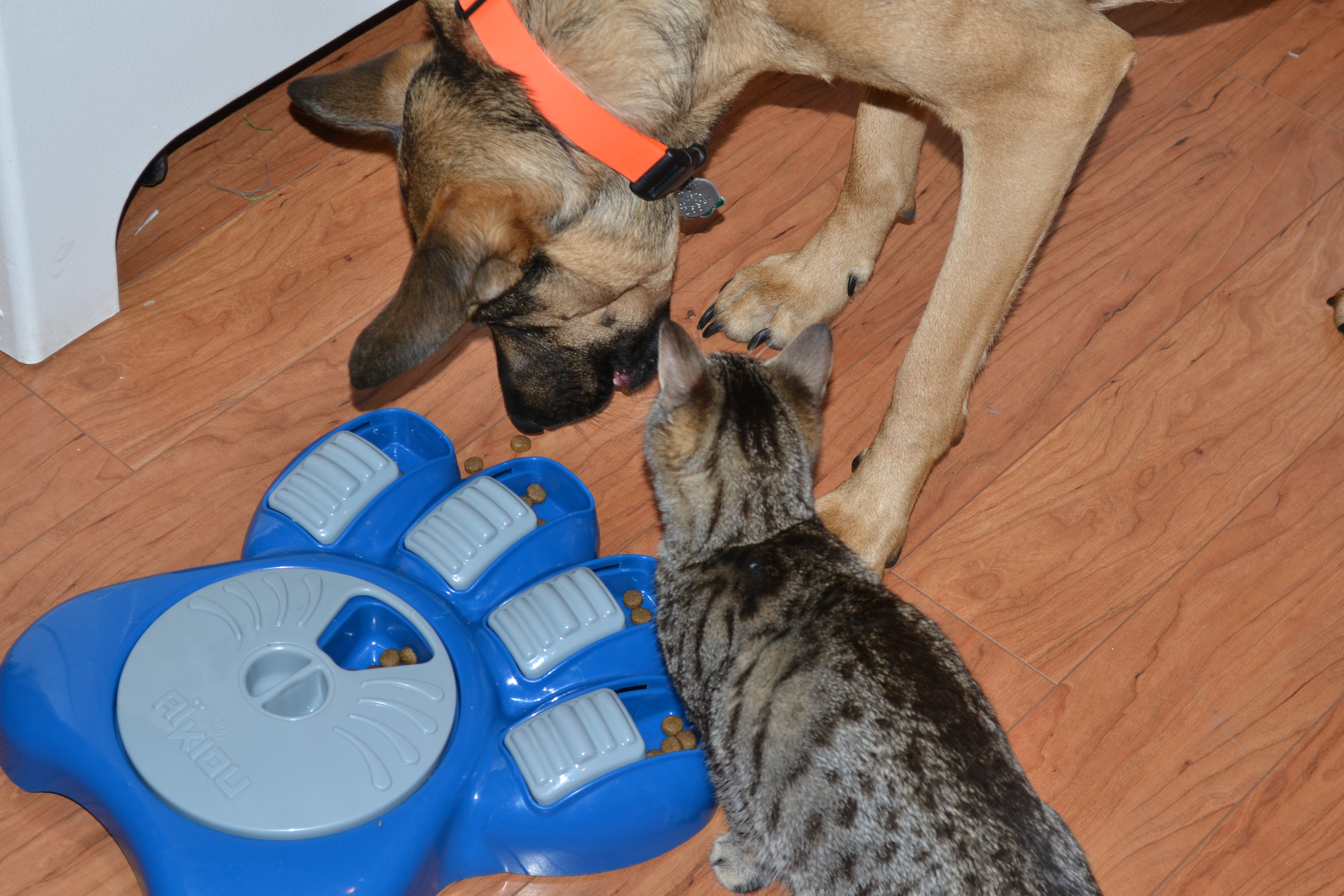Episode 1
There has been a buzz going around about this new show on CBS called “Dogs in the City”. The show is about a “Dog Guru”, named Justin Silver, that works with dogs and their owners in New York City. I watched the first as unbiased as possible and took notes about what I liked and disliked as the episode went on. First off, I’d like to start with my overall opinion about the show. From what I saw, I believe the producers are trying to remain as neutral as possible. Obviously this “Guru” is not a positive reinforcement type trainer, but it seems to me that they are trying to make him look neutral as he used BOTH corrections and food rewards in the show. In fact, they barely put any footage of him actually “training” in the episode. What I got as his over all message was “quit spoiling your dogs”. And honestly, I agree with him on that! My opinion, and what I hope it continues to be, is that this show is more about before and after’s rather than the actual training process. Why would I prefer that? Well, by just showing before and after of each case, the average Joe doesn’t have the ability to see the training process and try it on his own dog. So while I may not agree with how he might be training these dogs, at least it gives me comfort that his methods won’t be available for everyone to try!
What I Liked
- I felt he was honest with the owners. One of the cases was a spoiled English Bulldog named Beefy. His owner was almost more in love and attached to the dog than his own wife! The “Guru” was straight with the owner and stated that his wife was the third wheel in the relationship and the dog was his main love. The owner seemed shock to hear this, but it was what he needed to change.
- Beefy’s owners had been using a Flexi leash with their dog, the “Guru” disagreed with this and had the owner’s wife throw it away! I agree that Flexi leashes are a useless tool for training in this situation and was happy to see that he made this statement on national television! Flexi leashes give all the control to the dog and handicap the owner.
- In Beefy’s case, there was also an issue of separation anxiety. The dog always had to be in the same room as the owner while they were home. I liked how the “Guru” solved this issue. He stated that a baby gate is not as “black and white” as closing the door on your dog. Also, while the dog was behind the baby gate, they mainly ignored the dog’s barking and whining. I believe they could have added a stuffed KONG toy with something irresistable to occupy the dog, but compared to other trainers on TV, it was a refreshing sight.
- Trainers should always ask and recommend veterinarian check ups before they begin behavior training. Many times it is an underlying health issue causing problems. In this episode, the “Guru” recommended a vet visit for Rosie the Bernese Mountain Dog.
- In Charlotte’s case, he recommended management. Charlotte was a Pitbull Mix who attacked visitors who came to her owner’s office. He recommended that Rosie not be at the office until these issues have been solved. He did not give the impression that everything could be solved in 30 minutes.
What I Disliked
- His tools of choice were choke chains and martingale collars and he used them to give corrections.
- He used the word “cue” instead of “correction”. I really wish he hadn’t chosen this word because it is a common term that positive reinforcement trainers use instead of the word “command”. Positive reinforcement trainers don’t like using the word “command” because it infers that you are being stern or harsh with your dog. “Cue” on the other hand infers that you are communicating with your dog, not simply giving a command. Here the “Guru” has tried to make the correction sound nice and natural to the dog which is not at all the case, but to an average person watching it might make them think it’s okay.
- The way he taught the “leave it” command could have been taught in a different more positive way. There are several methods you can use that don’t involve pushing your dog away from the item. Honestly, I don’t the little girl pushing her 101lbs Bernese Mountain Dog to teach it “leave it”. Positive methods allow for people of all sizes to teach dogs of all sizes.
- While walking Beefy, he showed the owner’s wife how to use corrections to get the dog moving and then “reward” it for moving forward by giving some food. Combining rewards with corrections can be very confusing to a dog. I also think that it just added to the stereotype of positive trainers being “cookie pushers” because the reward was not timed correctly and the dog did not learn anything other than to keep moving to avoid corrections.
Overall, I am content that he does not show the majority of his methods for the average person to see and try on their own. I wish they would put a positive reinforcement trainer in his place, but that won’t happen. Hopefully, in the end, it will encourage dog owners to hire dog trainers to help with their dog’s behavior issues.
Why NOT to use a martingale collar on a bulldog:
Episode 2
Oreo – It was dissapointing to watch this little dog’s “training”. Although I agreed that the mother of the family should stop coddling the dog, I did not like the way he went about teaching it to walk on leash and how he taught it to stay on the mat while the family left the room. One thing I absolutely can’t stand is how he keeps mixing corrections with food. Why would you ever tell a dog “No” and then give it a treat? I would rather he teach the dog how to do it right to begin with rather than tell it no all the time. That would be true teaching and training!




